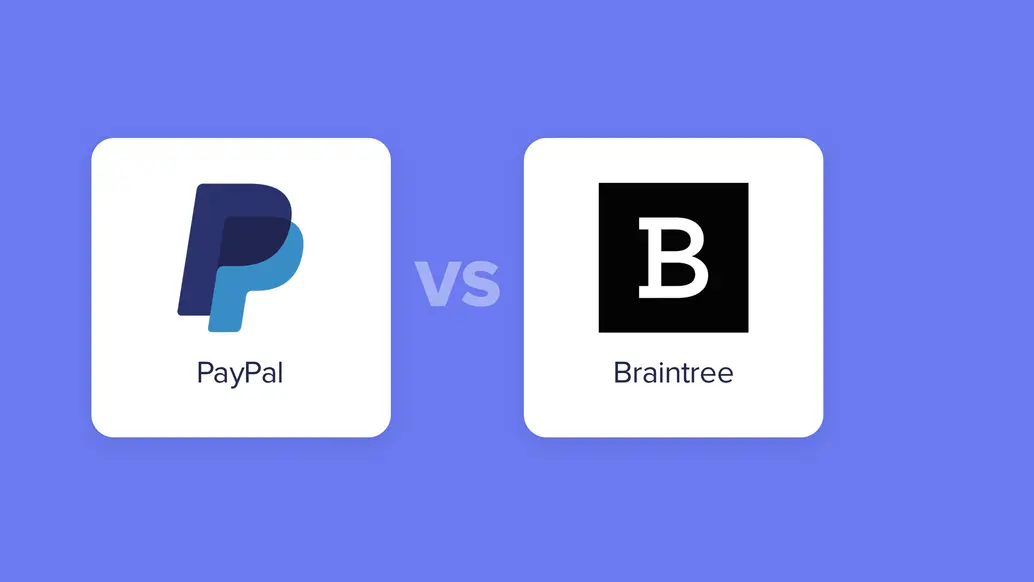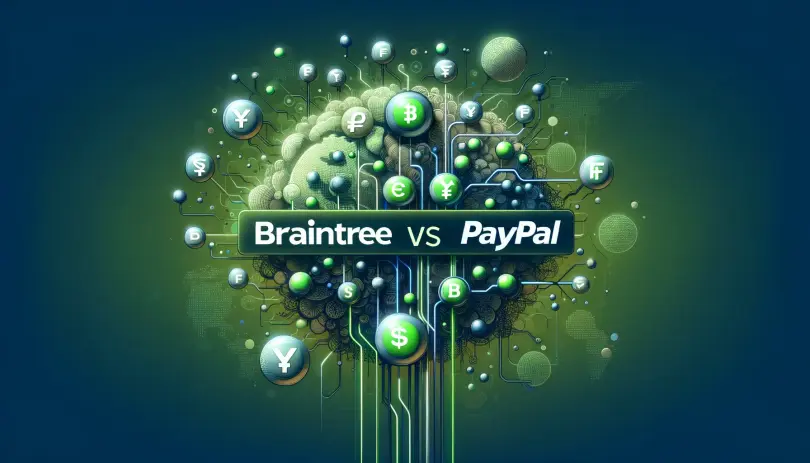Braintree vs PayPal: Which Is Right for You

In today’s digital age, more and more businesses are moving away from traditional payment methods, opting for quicker and more convenient online payment systems that come in numbers today. Casting a quick look at the options available, PayPal and Braintree confidently stand out as two key players.
PayPal is already a buzzword in the world of digital payments, while Braintree, though less well-known, offers a wealth of customizable features. Nonetheless, both are popular online payment processors, each catering to different customer needs. In this Braintree vs. PayPal comparison, we’ll explore how these two systems stack up to help you make an informed choice.
PayPal vs. Braintree: Basic Features
Founded in 1998, PayPal has been a trailblazer in secure and convenient digital transactions across the globe. While it initially focused on peer-to-peer transfers, PayPal swiftly expanded its services to support businesses and offer streamlined payment solutions.
The next question to answer—what is Braintree? Launched in 2007, Braintree is a platform designed with developers and businesses in mind, offering customizable payment solutions. Renowned for its flexibility and scalability, it’s particularly popular among startups and tech-driven companies.

Today, both PayPal and Braintree share a common thread. Back in 2013, PayPal acquired Braintree, making it a part of its robust and extensive network of over 325 million users. Yet, both entities still retain unique identities, serving different niches within the digital payment landscape.
To shed more light on the difference between PayPal and Braintree, let’s compare these payment gateways by major features that determine their functionality and efficiency.
Payment Methods
Braintree supports a wide range of payment methods, including credit and debit cards, digital wallets like PayPal, Apple Pay, and Google Pay, ACH direct payments, and Venmo (also a PayPal subsidiary). However, it’s important to note that Braintree is designed exclusively for online transactions via websites or mobile apps, limiting its use for brick-and-mortar businesses.
Meanwhile, PayPal is a trusted payment method that is good for businesses and consumers alike. As such, it supports credit and debit cards, bank transfers, PayPal balances, and global currency conversions. Despite its wide reach, PayPal doesn’t accept payments from digital wallets other than Venmo.
One key difference between Braintree and PayPal in this area is the lack of the native invoicing function and payment link capabilities in Braintree.
Currency Support
When we compare Braintree vs. PayPal, we must mention that these two are multi-currency systems processing payments in various monetary units without complex currency conversions. However, while PayPal supports only 25 most widespread currencies, Braintree accepts payments in 130 currencies, distinguished by an impressive global outreach for businesses. At the same time, both platforms have relatively high conversion rates, which can affect businesses handling high volumes of international transactions.

Integrations
Braintree is highly regarded for its developer-friendly approach, offering seamless integration through well-documented APIs, SDKs, and developer tools. It is easier to integrate into various platforms and applications with basic tech expertise.
PayPal also offers a range of integration options, including plugins, APIs, and simple checkout buttons for various platforms like Shopify and WooCommerce. However, it’s less customizable compared to Braintree, which may be a drawback for businesses that require more t tailored payment solutions.
Customization
Braintree allows businesses to fully customize their payment flow, manage security features, and user experiences, providing a high degree of flexibility. For some developers, the level of customization level might even feel overwhelming.
PayPal, on the other hand, offers more user-friendly, straightforward settings for managing payment processes, subscriptions, and account preferences. However, this simplicity, though, limits the degree of fine-tuning and customization, making it less suitable for businesses with advanced needs.
Reporting
When it comes to reporting, Braintree takes the lead with robust analytics tools that offer detailed insights into transactions, customer behavior, revenue trends. PayPal, on the other hand, provides clear yet more basic reports, covering essential analytics but lacking the depth and advanced analysis that Braintree offers.

Braintree and PayPal: Pricing
It might be a little tricky to compare the pricing approaches of PayPal and Braintree, as both systems operate on relatively similar fee structures with subtle differences. To determine which platform's approach aligns best with their financial objectives and operational scale, it’s important for businesses to evaluate which one aligns best with their financial objectives.
Fees
Designed for businesses, it's unsurprising that Braintree provides lower fees for all commercial-related transactions, benefiting from a higher number of transfers.
Fees | Braintree | PayPal |
|---|---|---|
Commercial transaction | 2.59% + $0.49 | 2.99% + $0.49 |
In-person transaction | 2.29% + $0.09 | 2.29% + $0.09 |
ACH | 0.75% per transaction, capped at $5 | 3.49% + $0.49 |
Discounts
Both Braintree and PayPal offer high-volume discounts. Braintree provides reduced rates and custom payment options for businesses with over $80.000 in monthly transactions, while PayPal's discounts are scalable, allowing businesses to potentially save on fees as their sales increase.
Transaction Limits
When choosing Braintree or PayPal, you won't have to deal with strict thresholds and limitations if you verify your account. That is, with Braintree, there are no transaction caps at all, while PayPal limits individual transactions to $60,000, with no monthly limit. However, if your PayPal account is unverified, you can only send $4,000 per transaction.
Braintree vs. PayPal: Security
Both Braintree and PayPal prioritize security, employing encryption, tokenization, and maintaining PCI DSS compliance to protect sensitive data during transactions. With a focus on advanced fraud protection, Braintree offers more customizable security measures for businesses. It’s of great use for companies needing fine-tuned control over risk management. Though operating under the same umbrella, PayPal slightly lags behind in terms of flexibility of its security settings, which is nevertheless still among the safest in the industry.

Final Thought
When it comes to choosing between Braintree and. PayPal, there is no clear winner. Braintree is ideal for businesses that need customization and developer-centric solutions, while PayPal is better suited for a broader user base thanks to its simplicity and widespread recognition. The right choice depends on your business size, transaction volume, target market, and technical requirements.




